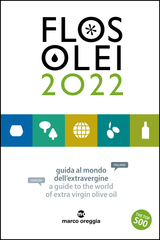It's easy to think that all olive oils are created equal. But in Italy alone, there are over 500 varieties of olives. In addition, many olive oils are created as a blend of different varieties in order to create a particular profile.
Which regions does Italian olive oil come from?
the South of Italy, with Apulia and Sicily are the largest Italian regions for the production of olive oils but olive farms and mills can be found all over the Italian Peninsula. We also stock a range from Tuscany.

How to choose your olive oil?
we recommend to start by considering the use of your Italian olive oil. A mild extra virgin olive oil is the most versatile and can be used on most dishes. A particularly intense would be best suited to stronger dishes such as soups, stews, red meat or for dipping. We include suggestions for all our oils.

How to taste olive oil?
the first step consists in smelling the aromas of your olive oil. The best practice consists in pouring olive oil into a small cup or glass and warming it up with your hand whilst covering it with the other hand. This allows to release the full aromas of the olive oil and start discovering the complex profile of Italian olive oils. The second step consisting in "slurping" and drinking a small quantity of olive oil which will enable you to taste the fruitiness, pepperiness and bitterness of the oil. We recommend to taste many different olive oils, to find your favourite.

What are the main Italian olive varieties: here are some of the varieties we stock as monocultivar olive oils: Leccino, Frantoio, Moraiolo and Peranzana. The North of Italy and Liguria in particular is famous for the taggiasca variety, whilst in the South, you can find Tonda Iblea, Nocellara, Oligarola and Biancolilla.

What are olive oil blends:
similarly to wines, olive oil producers create blends of olive oils by bringing together various complementary varieties to best suit consumer tastes. This can be the case for example, in combining a particularly strong olive variety with a mild one in order to create a more balanced profile. Blends can also be created by using the same variety but from different harvesting times, perhaps a very early harvest with very strong flavours with a more mellow mid-harvest.
What is denocciolato olive oil ?
olive oil is generally extracted from the full olive fruit including the pit. Some Italian olive oil producers go through a separation process whereby the olive pit is removed, providing a different profile but also leading to the loss of some of the nutrients found in the stone.
What does cold pressed olive oil mean ?
cold pressing refers to a process of olive oil production which doesn't involve the use of heat or chemicals. It generally refers to temperatures not exceeding 27 degrees Celsius. The actual pressing is rarely used in Italy today, as it has been replaced by modern cold extraction machinery which aims at protecting the olive fruit from oxydation. The production typically happens in stainless steel machines in a temperature controlled environment.
When is the time of harvest for Italian olive oils?
depending on the varieties, region and the targeted profile, premium olive oils are typically harvest between October and December. A number of olive oil producers start with an oil called novello, which is the first batch of olive oil of the season, celebrated across Italy for its freshness. Frantoio Franci, our partner from Tuscany, has named its novello olive oil Anteprima.
How is olive oil stored?
immediately after its extraction, olive oil is stored in stainless steel units which are temperature controlled and reduce contact with air. Once an order is placed, the oil is filled into glass bottle or metal tins. We recommend storing your olive oil away from sources of heat and light to preserve its taste and quality for as long as possible.
Is green olive oil the best?
colour can be quite deceptive with regards to olive oil quality and flavour. Some varieties tend to produce oils with dark green colour whilst others have different shades of yellow and gold.
Is bitter olive oil bad ?
no, bitterness is one of the main positive attributes of olive oil and an indication of the olive oil content in antioxidant and anti-inflammatory compounds.
Which olive oil have the highest level of polyphenols?
in our range, Coratina has the highest level of polyphenols followed by frantoio.
Where can I learn more about the best Italian olive oils ?
Flos Olei publishes an exhaustive review of the world's best olive oils with a large selection of Italian olive oils from all regions. It can be purchased as a hard copy or downloaded as an app. Gambero Rosso also publishes an excellent guide to the best Italian olive oils.


